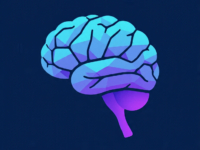
How Netflix Uses AI to Keep You Watching
Ever wonder how Netflix seems to know exactly what you want to watch next, often before you even do? It’s not magic; it’s the sophisticated power of Artificial Intelligence (AI) working tirelessly behind the scenes. Netflix has revolutionized how we consume entertainment, and a colossal part of its success lies in its relentless and innovative application of AI to personalize every aspect of your viewing experience. From recommending your next binge-watch to optimizing streaming quality, AI is the secret sauce that keeps millions of subscribers glued to their screens.
Background and Context: The Quest for Personalization
Before Netflix became the streaming giant it is today, the company understood a fundamental truth: people get overwhelmed by choice. Imagine a video store with thousands of titles; finding something you’d genuinely enjoy could be a daunting task. This challenge became even more pronounced as Netflix transitioned from DVD-by-mail to a digital streaming service with an ever-expanding catalog.
This is where AI stepped in. Netflix’s journey with AI began with its earliest recommendation systems, evolving from simple collaborative filtering to complex deep learning models. The goal was, and remains, to solve the “what to watch next” problem, making content discovery effortless and enjoyable. They realized that a highly personalized experience was key to retaining subscribers and fostering loyalty in a competitive market. Over 80% of all content watched on Netflix comes directly from its personalized recommendations, a testament to the power of its AI engine.
Key Features and Benefits of Netflix’s AI
Netflix’s AI ecosystem is multifaceted, impacting various aspects of the platform. Here are some of its core applications and the benefits they bring:
Personalized Recommendations 🎬
This is arguably the most famous application of Netflix’s AI. The recommendation engine analyzes a vast amount of data to suggest titles you’ll love. This includes:
- Your viewing history: What you’ve watched, rewatched, or skipped.
- Your ratings: Thumbs up/down on titles.
- Interaction behavior: How long you hover over a title, search queries, Browse patterns, and even the time of day you watch.
- Similar users’ preferences: Identifying patterns among users with similar tastes to suggest content they enjoyed.
- Content metadata: Analyzing genres, actors, directors, themes, release year, and other attributes of the content itself.
This intricate analysis ensures that your homepage is unique to you, displaying rows of content ranked and ordered to present the most likely titles you’ll enjoy.
Thumbnail Personalization 🖼️
Did you know the thumbnail image for a show or movie you see might be different from what your friend sees? Netflix uses AI to generate and test hundreds of frames from a title, determining which image is most likely to make you click. For example, if you watch a lot of dramas featuring a particular actor, Netflix might show you a thumbnail of that actor from a specific scene, even if it’s not the main promotional image.
Optimal Streaming Quality 📶
AI isn’t just about what you watch, but how you watch it. Netflix employs AI to dynamically adjust video quality based on your internet connection, device, and even network congestion. This ensures you get the best possible streaming experience with minimal buffering, even at reduced bandwidths.
Content Acquisition and Creation ✍️
Netflix leverages AI insights to inform its content strategy. By analyzing viewing trends and predicting what types of content will resonate with specific audiences, AI helps Netflix make data-driven decisions on what shows and movies to produce or acquire. Recently, Netflix has also started incorporating generative AI into content creation itself, such as for visual effects, speeding up production and reducing costs. For example, a building destruction scene in the Argentine sci-fi series “El Eternauta” was entirely AI-generated, completed ten times faster and more cost-effectively than traditional VFX methods.
A/B Testing and UI Optimization 📊
Netflix is a pioneer in A/B testing. Almost every proposed change to the product, from new recommendation algorithms to UI features and content promotion tactics, is rigorously A/B tested. AI analyzes the results of these experiments to determine which variations lead to higher engagement, retention, and satisfaction, allowing Netflix to continuously refine its user experience at scale.
Pros and Cons of Netflix’s AI
While Netflix’s AI offers significant advantages, it also comes with potential drawbacks.
| Pros of Netflix AI | Cons of Netflix AI |
| Hyper-Personalization: Tailored recommendations mean less time searching and more time watching content you genuinely enjoy. | Filter Bubbles: The algorithms, by constantly showing you more of what you like, can inadvertently create a “filter bubble,” limiting your exposure to diverse genres or perspectives you might otherwise discover. |
| Enhanced User Engagement: The seamless discovery process keeps users engaged, leading to higher watch times and reduced churn. | Algorithmic Bias: If the training data for the AI contains biases (e.g., favoring certain genres or demographics), the recommendations might perpetuate those biases, potentially leading to a less inclusive content experience. |
| Optimized Streaming Experience: AI ensures smooth playback and adapts to network conditions for consistent quality. | Privacy Concerns: The extensive data collection required for personalized AI raises questions about user privacy and how this data is stored and utilized. |
| Data-Driven Content Strategy: Helps Netflix make informed decisions on content production and acquisition, leading to more successful original programming. | Reduced Serendipity: While efficient, the highly curated experience might reduce the chance of stumbling upon unexpected gems outside your usual preferences. |
| Efficient Content Production: Generative AI can speed up and reduce the cost of certain aspects of film and series production. | Impact on Human Jobs in Production: The increasing use of AI in content creation raises concerns about the future of traditional roles in visual effects and other creative fields. |
Use Cases / Who Should Use It
Netflix’s AI is integral to its core service, meaning everyone who uses Netflix benefits from (and interacts with) its AI. However, understanding how it works can empower users to “train” the algorithm more effectively.
- Casual Viewers: Benefit from quick and easy content discovery, eliminating decision fatigue.
- Binge-Watchers: The “Continue Watching” row and subsequent recommendations keep the narrative flowing.
- Explorers: While the filter bubble is a concern, active use of search, ratings, and Browse different categories can help the AI understand a wider range of interests.
- Content Creators & Industry Professionals: Can study Netflix’s AI-driven success to understand audience preferences and content trends.
- Students and Researchers in AI/ML: Netflix’s implementation serves as a real-world case study for advanced AI applications.
FAQs
Q1: How does Netflix’s AI know what I like?
A1: Netflix’s AI analyzes your viewing history, ratings (thumbs up/down), search queries, how long you watch a title, and even what other users with similar tastes are watching. It combines these data points using complex algorithms like collaborative filtering and deep learning to predict what you’ll enjoy.
Q2: Can I influence Netflix’s recommendations?
A2: Absolutely! The most direct way is by rating titles with “thumbs up” or “thumbs down.” Watching a show to completion or rewatching episodes also sends strong signals to the algorithm. Conversely, skipping titles or not finishing them tells Netflix you’re not interested.
Q3: Does Netflix use my personal data like age or gender for recommendations?
A3: Netflix explicitly states that its recommendation system does not include demographic information such as age or gender as part of the decision-making process. The personalization is based purely on your interactions with the service and content characteristics.
Q4: What is a “filter bubble” and how does Netflix’s AI contribute to it?
A4: A filter bubble is a state of intellectual isolation that can result from personalized recommendations. Because Netflix’s AI aims to show you more of what you like, it can inadvertently limit your exposure to content outside your usual preferences, making it harder to discover new genres or unexpected shows.
Q5: How does AI help Netflix beyond just recommendations?
A5: Beyond recommendations, AI is crucial for optimizing streaming quality (adaptive bitrate), personalizing thumbnails, informing content acquisition strategies, and even assisting in content production (e.g., generating visual effects to save time and cost). It’s also heavily used in A/B testing to refine the user interface and overall platform experience.
Conclusion
Netflix’s integration of AI isn’t just a technological marvel; it’s a fundamental pillar of its business strategy. By prioritizing a hyper-personalized user experience, Netflix uses AI to keep you watching by making content discovery seamless, streaming flawless, and the entire platform feel intuitively designed for your tastes. While challenges like filter bubbles and ethical considerations around AI in content creation persist, Netflix continuously refines its algorithms and acknowledges the need for transparency and user control.
Final Verdict or Model/User Preference Conclusion
The evidence overwhelmingly points to Netflix’s AI as a highly effective and transformative force in the entertainment industry. For users, it offers an unparalleled level of convenience and content relevance, significantly enhancing the viewing experience. For Netflix, it’s a critical tool for user engagement, retention, and strategic growth in an increasingly competitive streaming landscape. While the human element of serendipitous discovery might sometimes be overshadowed, the sheer efficiency and personalized delight provided by Netflix’s AI make it an undeniably powerful and beneficial technology for the vast majority of its subscribers. It’s a prime example of how AI, when applied thoughtfully and strategically, can create immense value for both businesses and consumers.



















Leave a Reply